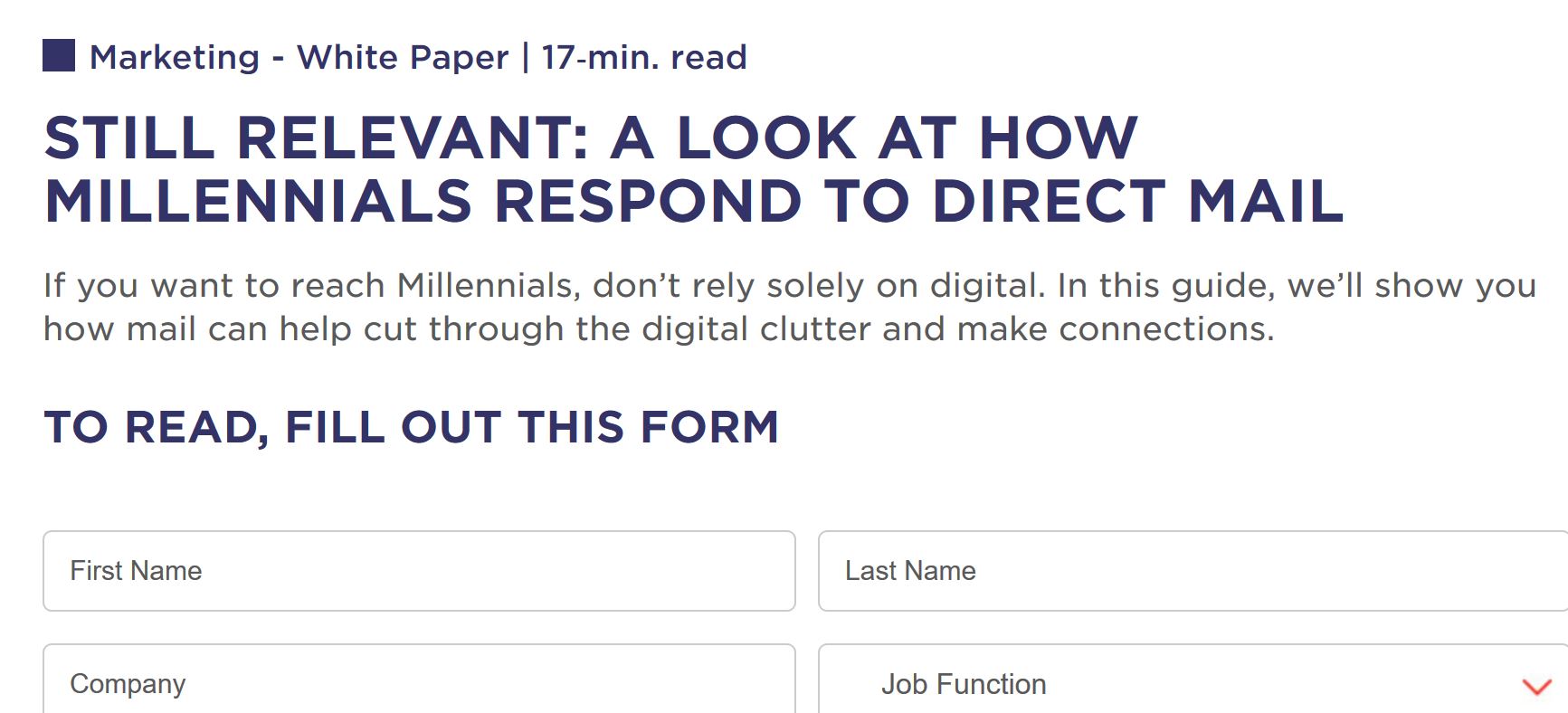Apparently, Millennials Are Also Destroying The Official Means Of Legal Communication
Good riddance -- sending correspondence by regular mail is the least efficient means of getting a message to someone,
For those of you who don’t know, the United States Postal Service has an awesome page on why millennials totally do still read printed things.

They actually have a whole series of whitepapers and myth-busting pages about how to capture the attention of the elusive millennial.

Navigating Financial Success by Avoiding Common Pitfalls and Maximizing Firm Performance

“Fill out this form and we’ll mail to your house a document explaining why regular mail is better than email. You should receive it 3 days, unless 3 days from now is a Sunday, in which case, you’ll receive it on Monday!” Just kidding, they email it to you.
So, on top of destroying casual dining chains (and everything else if you believe the news), those damn kids have destroyed the snail mail system too. Good riddance, I say.
Why Using Regular Mail is the Worst
Sending correspondence by regular mail is the least efficient means of getting a message to someone, barely above using birds with cute scrolls taped to their legs. Yet, it remains the official way of doing many things in the law. Mail and personal service are the two universally accepted service options for serving things on opposing counsel. Most states only allow email service if it is by stipulation of the parties.
Sponsored

The Business Case For AI At Your Law Firm


Legal AI: 3 Steps Law Firms Should Take Now

Is The Future Of Law Distributed? Lessons From The Tech Adoption Curve

Is The Future Of Law Distributed? Lessons From The Tech Adoption Curve
Just the act of printing a document, filling out the mailing information in Word and printing the envelope, then weighing and adding postage can eat up time. That does not count the one to three days it takes for the letter to be delivered. And let’s talk about the receipt of letters at a law office. Several in-house counsel firms for insurance companies have mailing addresses in the midwest, but physical addresses that are local. So, if I live in California and I want to mail a motion to opposing counsel 10 miles away, it goes to Oklahoma, then Oklahoma logs it and routes it to the firm in California, where it goes to a legal secretary, whose job it is to carefully cut each envelope and leave it on the partner’s chair so he or she could read it. Then, you wait for the reply. Sending letters adds an extra 30 minutes to an hour of unnecessary work for lawyers and staff to getting letters or motions out and delays everything by days.
The state court systems are in a worse bind. Many state courts are facing huge budget cuts and layoffs of personnel. Most state court systems do not have an electronic notification system. Many are just now getting into electronic filing. So, every notice that goes out to lawyers is sent by someone printing things out and addressing envelopes and sending things to the mailing room. It’s a lot of unnecessary work. An afternoon of printing, folding, and mailing could be replaced with a dozen or so mouse clicks.
Do We Even Need Slow Mail?
 A number of times, I have been involved in disputes over something that one side said was sent, but the other side said was never received. Apparently, the dispute is resolved conclusively if a legal secretary has signed a piece of paper attesting under penalty of perjury that he or she did in fact mail the disputed document to opposing counsel. Case closed. And that probably made sense in the era of pistol dueling for honor, but in the last 20 years or so, it just makes more sense to attach as an exhibit the email with attachments than a proof of service by mail if you want to prove that something was sent at a certain date and time.
A number of times, I have been involved in disputes over something that one side said was sent, but the other side said was never received. Apparently, the dispute is resolved conclusively if a legal secretary has signed a piece of paper attesting under penalty of perjury that he or she did in fact mail the disputed document to opposing counsel. Case closed. And that probably made sense in the era of pistol dueling for honor, but in the last 20 years or so, it just makes more sense to attach as an exhibit the email with attachments than a proof of service by mail if you want to prove that something was sent at a certain date and time.
The fear, I suppose, is that not everyone has an email address, but everyone has a physical address, so we should use the physical address instead of email for official communications. If that is one of the reasons for the court system preferring regular mail to email, it’s probably got the statistics exactly opposite. There are probably more practicing attorneys with email addresses than physical office locations. Perhaps, the fear is that something will go to spam and an attorney will miss something important. I am more concerned with regular mail getting lost in the shuffle than I am about an email getting lost in a spam folder. But, that is something that could be easily remedied with creating message rules in Outlook like I have for electronic filings in federal cases and my state complex litigation cases that use an electronic filing and service system – you just create a rule in Outlook to keep those emails in your inbox and not send them to the spam folder.
Sponsored

Early Adopters Of Legal AI Gaining Competitive Edge In Marketplace

Navigating Financial Success by Avoiding Common Pitfalls and Maximizing Firm Performance
I look forward to telling my kids about how in my time, we had to send official legal correspondence by licking lightly glued things and sticking them together after weighing them on a scale and how we kept little knives at our desks designed to cut open the outer part of the letter without cutting up the document inside. In the meantime, it’s time the legal profession got over its fear of electronic communication.
Jeff Bennion is a solo practitioner at the Law Office of Jeff Bennion. He serves as a member of the Board of Directors of San Diego’s plaintiffs’ trial lawyers association, Consumer Attorneys of San Diego. He is also the Education Chair and Executive Committee member of the State Bar of California’s Law Practice Management and Technology section. He is a member of the Advisory Council and instructor at UCSD’s Litigation Technology Management program. His opinions are his own. Follow him on Twitter here or on Facebook here, or contact him by email at jeff@trial.technology.








